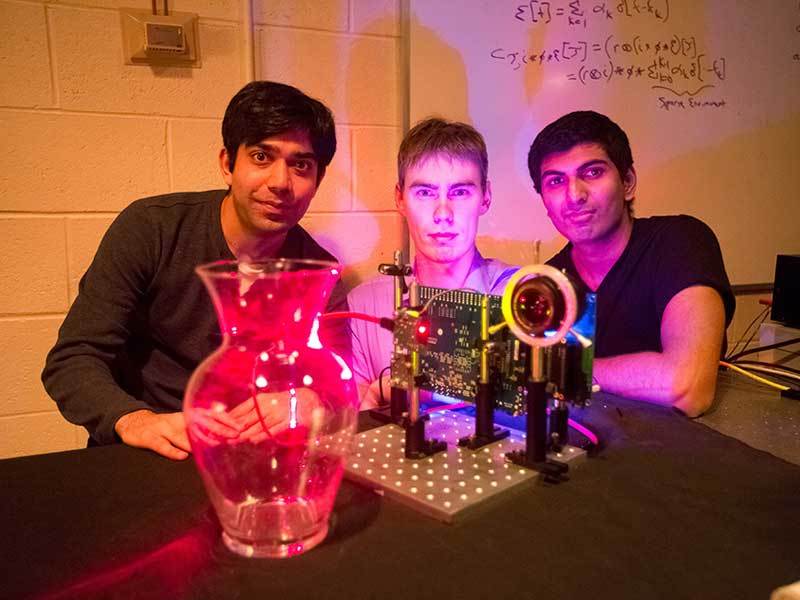Low-cost ‘nano-camera’ can operate at the speed of light
 MIT engineers have devised a nano-camera that can operate at the speed of light. Among other things, this 3D camera could be used in medical imaging, collision-avoidance detectors for vehicles, and for better motion tracking and gesture-recognition in interactive gaming. Aside having good properties, this novel camera is also affordable since its price is expected to be around $500.
MIT engineers have devised a nano-camera that can operate at the speed of light. Among other things, this 3D camera could be used in medical imaging, collision-avoidance detectors for vehicles, and for better motion tracking and gesture-recognition in interactive gaming. Aside having good properties, this novel camera is also affordable since its price is expected to be around $500.
The novel camera uses “Time of Flight” imaging technology that measures the time-of-flight of a light signal between the camera and the subject for each point of the image. This system then calculates the distance light signal has traveled based on the known speed of light.
However, changing environments, semitransparent surfaces and edges can all create multiple reflections that obscure the signal. Unlike other devices based on this technology, such as Microsoft’s second-generation motion sensing input device Kinect, the novel camera can’t be interfered by rain, fog or translucent objects.
“Using the current state of the art, such as the new Kinect, you cannot capture translucent objects in 3D. That is because the light that bounces off the transparent object and the background smear into one pixel on the camera. Using our technique you can generate 3D models of translucent or near-transparent objects”, said Achuta Kadambi, a graduate student at MIT.
The nano-camera developed by the researchers at the MIT Media Lab uses an encoding technique commonly used in telecommunications to calculate the distance a signal has to travel. According to the researchers, the camera uses a similar concept to that used to clear blurred photographs.
“We use a new method that allows us to encode information in time. So when the data comes back, we can do calculations that are very common in the telecommunications world, to estimate different distances from the single signal”, said Ramesh Raskar, an associate professor of media arts and sciences and leader of the Camera Culture group within the Media Lab.
A trillion-frame-per-second camera, developed in 2011 by Raskar’s research group, is capable of capturing a single pulse of light as it traveled through a scene. Namely, it probes the scene with a femtosecond impulse of light and then uses fast but costly equipment to take an image.
On the other hand, the novel nano-camera probes the scene with a continuous-wave signal that oscillates at nanosecond periods. This allows usage of inexpensive light-emitting diodes (LEDs) that can strobe at nanosecond periods – thus allowing the camera to reach a time resolution only 10 times weaker than femptophotography.
“By solving the multipath problem, essentially just by changing the code, we are able to unmix the light paths and therefore visualize light moving across the scene. So we are able to get similar results to the $500,000 camera, albeit of slightly lower quality, for just $500”, said Kadambi.
For more information you can read the paper: “Coded Time of Flight Cameras: Sparse Deconvolution to Address Multipath Interference and Recover Time Profiles” [1.2MB PDF].










Leave your response!